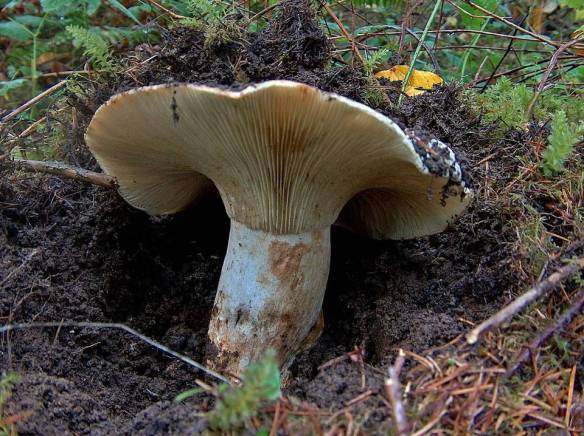Nature is complex. This ‘plant’ is not a plant at all, rather it’s a parasite containing no chlorophyl. Myco-heterotrophs are plants that have no ability to produce energy through photosynthesis. Instead they steal resources from fungi. Fungi do not use photosynthesis either and find their energy through other methods too.
So where is the energy coming from for this myco-heterotroph? Photosynthetic trees, and the Ruissulaceae that form mycorrhizal relationships with them.
These were found in a pine tree plantation, growing abundantly up from the moss. In the early fall this section of the plantation is rich with Russula and Lactarius, and in turn also rich with lobsters (Hypomyces lactiflorum) in the late summer and early fall.
H. Lactiflorum is an interesting parasitic species, having the hosts Russula brevipes and Lactarius species.
Such a complex relationship, and M. uniflora being rare, it’s thrilling to see this cycle happening in my favorite tree plantation.




